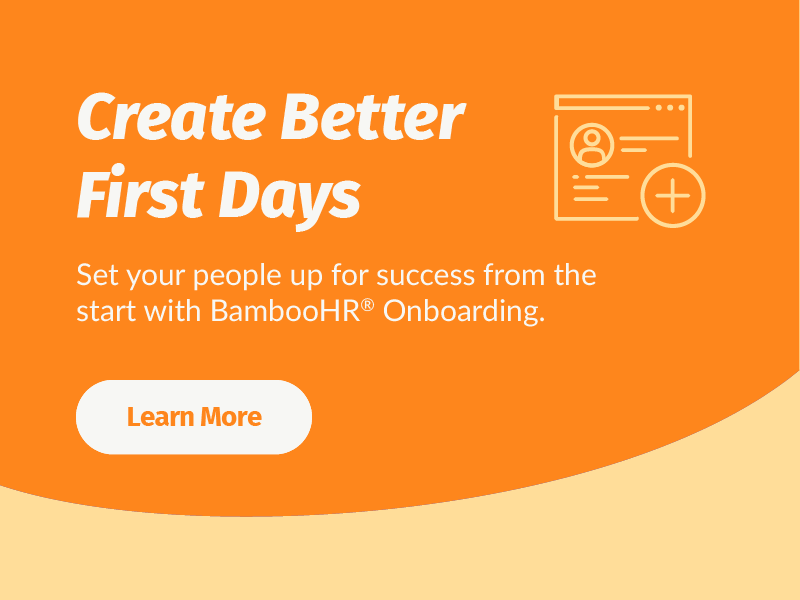6 Essential Videos Your Onboarding Process Needs
Handshakes have happened, contracts have been signed, and it’s your new hire’s first day at work. You want their onboarding experience to be smooth, easy—even fun—but how you onboard a new employee and what you use as onboarding material will shape their experience for the first few weeks and months of being on the job at your company.
You’re trying to achieve many goals with effective onboarding. Among them:
- Educating the new employee about your company’s mission, vision, and culture.
- Setting expectations about job duties, roles, and performance.
- Training the new hire on how to execute their job functions.
- Introducing your organization’s structure, workflows, and team members.
- Inspiring excitement and gratitude for being hired by an awesome company.
And of course, while onboarding can’t deliver all the tools and resources needed to set a new employee up for success, onboarding does have a significant impact on whether an employee starts on the right foot and if they will want to stay at your company long-term.
Many companies take the onboarding process for granted. But the truth is, these same organizations would benefit immensely from upgrading their onboarding processes—and even companies who care about their onboarding processes could often do more to make onboarding more interesting, fun, and effective.
Did you know that only 12 percent of employees think their company did a good job of onboarding? In this post, we’ll show you how using videos for onboarding can dramatically improve the productivity and retention of new hires. We’ll also give you six video types you should consider including in your onboarding process, along with five tips for making video work for you.
But first, let’s answer an important fundamental question:
Why Does Your Onboarding Process Need to Be More Engaging?
The average U.S. employer spends $4,000 and 24 days on new hires.
The cost for you will vary depending on your industry, the job position, your hiring practices, and so on. However, a study by Employee Benefit News (EBN) suggests that it costs companies 33 percent of an employee’s annual salary to hire a replacement.
And this type of turnover happens more often than you might think: According to survey research by BambooHR, 31 percent of U.S. employees have left a new job in the first six months, and of those people, well over half had already quit by the three-month mark. Meanwhile, some studies estimate it takes a total of eight months for a new employee to become fully productive.
But while there are multiple reasons for today’s higher levels of turnover, you’re probably more interested in the solutions to this problem.
As winning strategies for keeping employees at your company go, better onboarding seems to be a worthwhile investment. Effective onboarding can help retain employees for years after you’ve hired them, rather than for a handful of months.
According to the SHRM Foundation, one company, Corning Glass Works, found that their employees were 69 percent more likely to remain at the company if they attended a structured orientation program. And Glassdoor found that you can boost a new hire’s retention rate by 82 percent and their productivity by 70 percent, simply with a stronger onboarding process. That’s massive.
These statistics may have sold you on upgrading your onboarding. But you’re probably still wondering when the topic of this article—video onboarding—will come into play. Well, wonder no more.

Why Use Video to Improve Your Onboarding Process?
Video offers so much for the experience and education of new hires going through your onboarding process.
Here are just a few benefits:
Videos Show Rather Than Tell
A company handbook can tell you that the company is excited to have you as part of the team. It can tell you what the company does and why. And it will tell you all the guidelines new employees have to follow. But all it shows you is black ink on white paper.
It doesn’t show the smiling face of the CEO greeting you, or deliver a collective cheer from your new teammates. It doesn’t walk you through the software programs you’ll be using or introduce you to the machinery you’ll operate.
Live, in-person introductions and demos can do these things, but they require people to deliver them—people who may be critical to operations, or have people to manage and projects in the pipeline. You can’t guarantee they’ll always be available or that they’ll always deliver a consistent experience. Only video has the capability to show new employees complex, dynamic content about your organization while offering a consistent experience and minimal impact on company productivity.
Videos Are More Engaging
Reading walls of text is boring, and boredom is the death of engagement. But studies show that viewers retain up to 95 percent of a message delivered through video, compared to only 10 percent of what they read. So, if you want new hires to sit up in their chairs, pay attention, and remember the information you want them to learn, then you should use video.
Consider this: What you give employees during onboarding is critical, but it’s only valuable if they take it away and use it. So, while you’re thinking about how to make your onboarding program more effective, it’s just as critical to think about how you deliver information; employees who remember the information they saw during onboarding will likely find their onboarding experience more effective.
Videos Speed Up the Onboarding Process
People read at very different rates. If your onboarding process consists of many documents to read, it may take a while for a new employee to work through it all. But whether it takes them an hour or an entire afternoon to peruse your handbook, it’s likely new employees can consume multiple videos covering the same (or more) information in much less time. That means you can cover more topics faster, with more time for person-to-person interactions that help employees feel like part of the team. And as we discussed above, they’re likely to retain more of the information delivered through video than if they read it, which means a more complete learning experience with fewer time-consuming questions. In the end, the faster employees can be onboarded, the faster they can start doing their jobs, start delivering value, and feel a sense of accomplishment.

How to Use These 6 Types of Videos to Improve Your Onboarding Process
The onboarding videos you create will be specific to your company, the job you’re hiring for, and the information being covered, but there are some universal types of videos that most companies would benefit from including in their onboarding process. The following types of videos can be adapted to most organizations, and we’ll show you why each one helps improve onboarding.
Let’s dive in.
“Welcome to the Company” Video
The first video in your onboarding process should probably be some form of warm welcome from your company to the new hires, and the message should come from someone authoritative—your CEO, the new employees’ manager, key team members, or a combination of all three.
This type of video will help calm first day nerves and make new hires feel like they’re a part of something big and important. It also allows you to communicate your company’s mission and purpose, and answer the biggest question new employees are afraid to ask: what am I really doing here and why?
In other words, a “Welcome” video is your opportunity to say hello—but it’s also a great way to show new employees what you believe in, why their work matters, and what good the company is out to do in the world. By instilling that sort of meaning and purpose in a new employee, you elevate their experience from “being hired to do a job” to “fulfilling a vital role on a team mission with a defined goal.”
The difference between these two experiences might make the difference between new employees embracing your company or looking for the exit as soon as you let them in.
“Goals for New Hires” Video
New hires need to understand the expectations for their new position, and a goals-focused video can set those expectations up from the start. This should be a rundown of what the team and the company wants them to achieve in their first days, weeks, and months at work—a roadmap of objectives mapped out within a reasonable time frame. For maximum retention, you may want to create an accompanying checklist for new hires to use.
Tech Setup Video
Every company has dedicated technology, workflows, and processes that they expect new employees to use and follow. And virtually all new hires will need help understanding these things and getting set up. This is where videos really shine over text—plenty of steps in this setup and orientation phase can be technical, jargon-heavy, complicated, and confusing. A video helps by giving new hires an audiovisual tour of what they’re using and how to use it.
Even after a video introduction, new hires will likely still have questions about setting up their technology, accessing accounts, and using new software or unfamiliar tools. But at the very least, a video can take them from “How do I turn this thing on?” to “How do I export this file into multiple formats?” Furthermore, if you create a whole library of tutorial videos to answer these kinds of questions, you’ll empower employees to help themselves while saving everyone involved a lot of time and frustration.
Knowledge Transfer Video
In many cases, new employees may be replacing people who are leaving or who have already left the company. If you haven’t prepared in advance with a plan for knowledge transfer, those departing employees may take knowledge, skills, habits, and hacks along with them—things that could help a new hire get up to speed faster and become a contributor instead of a trainee.
Sharing the intricacies and quirks of various processes can have a massive impact on how well a new hire not only performs their job, but also how well they integrate with the team. A video can capture behaviors and approaches that the new hire can immediately pick up on instead of being left to figure them out on their own.
A side bonus of adding this kind of video to your new-employee onboarding process is the opportunity it provides for managers and leaders to review and analyze existing processes. Creating a video makes it easy to identify extra steps and faults in your workflow and eliminate them before a new employee falls into an inefficient routine.
Company Policies Video
This onboarding video is an obvious inclusion; every new hire needs to be briefed on the key company policies that form the bedrock of your organization. This video should include the usual HR stuff:
- Code of ethics and conduct policies
- Nondiscrimination policies
- Cybersecurity policies
- Workplace harassment policies
But it can also include a section on culture, values, and other elements that make your organization one-of-a-kind. It doesn’t have to be a dry, by-the-book lesson covering all the dos and don’ts and their possible consequences—it can be funny, endearing, and expressive of your company’s personality, all of which will make new employees happy about their choice to sign on with you.
Policy training is certainly a process that should be supplemented with face-to-face meetings if possible, but videos can save HR time and save the company from paying a legal team to make the same presentation over and over. Videos can also deliver some of the more cut-and-dry content—the kind that puts people to sleep even before lunch—in a fun, engaging way that a presenter can’t match without being a trained stage magician.
Skills Training Video
The employees you hire likely already have some of the skills required to perform their jobs, but there are probably some skills they’ll need to learn to do their very best work. These day-to-day skills will take time to develop—they won’t be absorbed and perfectly implemented on day one—yet there’s still a tendency to throw as much at the new hire as possible right at the beginning and then walk away to let them sort it out on their own.
This is ineffective and a huge waste of time and money. One of the biggest pitfalls in many onboarding processes is information overload, and it’s an area where videos can help.
Video training lets you do two important things that one-time presentations and written materials can’t:
- “Drip” content to new hires over time, at a rate that allows their minds to absorb the information in digestible chunks, and on a schedule that allows them to put information to practical use as they learn it.
- Host a catalog of content that new hires can access on-demand whenever they feel stuck, with lessons that don’t feel like “work” so much as a break from work.
These twin functions make learning easy, fun, and natural—new hires can access specific videos before performing specific functions and learn while doing, all at their own pace.
Start Using Video in Your Onboarding Process Today
If you’re ready to start incorporating videos as part of your onboarding program, we recommend using a proven employee onboarding tool that supports videos and simplifies the process. That will allow you to focus on creating the video content, while the software handles the technical aspect of adding videos into your process.
But even before you decide to jump in with new software and a whole new process, we might suggest just making a few videos and seeing what happens when you show them to new hires. Because once you start, we’re confident you’ll realize a few things:
- It’s easier than you thought
- It’s a fun change of pace from your daily grind
- You’ll have people lining up to participate and contribute knowledge
- No matter how bad your first videos are, they’ll be at least as effective as your existing process—and probably more memorable, to boot
Bottom line, your new hires will benefit from onboarding videos, but so will you and your entire organization.
And best of all, when you shake an excited new employee’s hand and file the signed contracts, you can be confident that your onboarding process will keep the momentum going, keep them engaged, and keep your company filled with loyal employees who are happy to work for you today, and for many years to come.
About the Author
Joe Martin is CloudApp’s GM and VP of Marketing. With more than 13 years of experience in the industry and tech that makes it run, he provides strategic guidance on how to build and use the right stack for businesses. Formerly Head of Social Analytics at Adobe, Joe believes marketers need smart training and leadership to scale company growth. Connect with Joe on LinkedIn and follow him on Twitter @joeDmarti.
Get caught up every month on all things HR. Don't worry, we promise we won't spam you.










